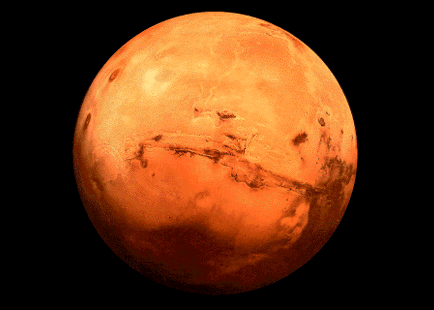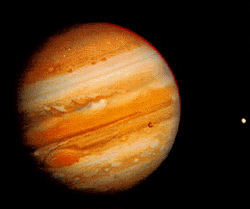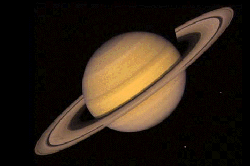
The first spacecraft to visit Mars was Mariner 4 in 1965.
Mars
Mars (Greek: Ares) is the god of War. The planet probably got this name due to its red color; Mars is sometimes referred to as the Red Planet. (An interesting side note: the Roman god Mars was a god of agriculture before becoming associated with the Greek Ares; those in favor of colonizing and terraforming Mars may prefer this symbolism.) The name of the month March derives from Mars.
Mars has been known since prehistoric times. It is still a favorite of science fiction writers as the most favorable place in the Solar System (other than Earth!) for human habitation. But the famous "canals" "seen" by Lowell and others were, unfortunately, just as imaginary as Barsoomian princesses.
The first spacecraft to visit Mars was Mariner 4 in 1965. Several others followed including the two Viking landers in 1976. Ending a long 20 year hiatus, three new spacecraft will arrive at Mars in 1997.twilight?

